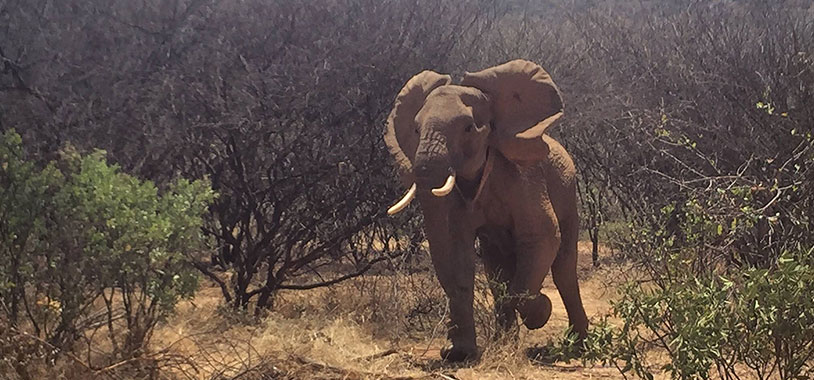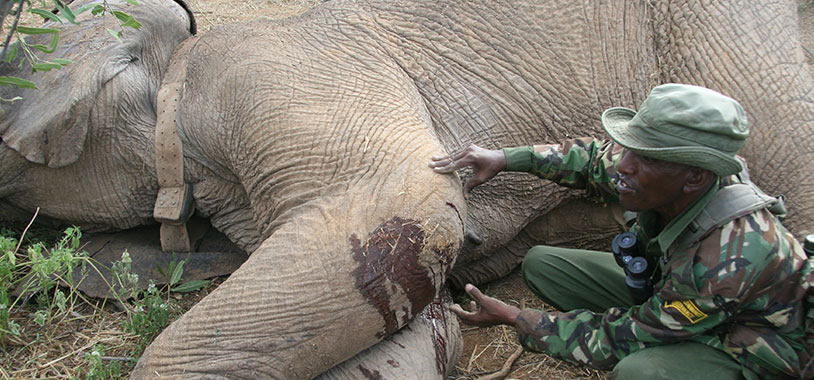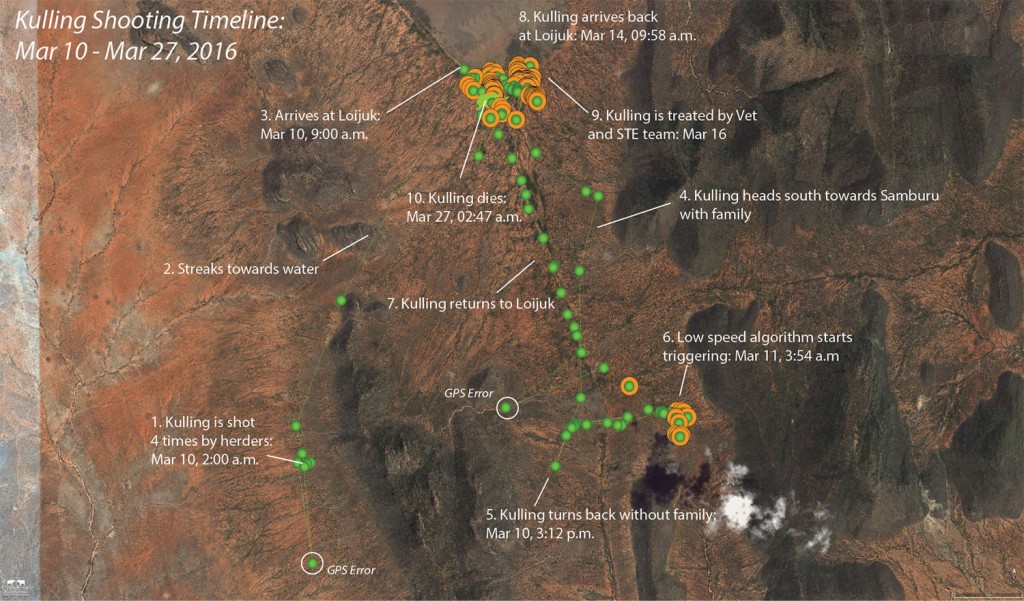On 15th March 2016 we received an immobility alert from one of our collared elephants in Samburu. We then received a call from Westgate Conservancy Scouts reporting that a herder had seen an injured, collared elephant in Loijuk. I immediately checked the tracking data on Google Earth and confirmed that the immobile collared elephant was Kulling, one of the migrants – elephants that use Samburu Reserve only occasionally.
Whenever one of our elephants gives an immobility report we take it seriously. We immediately went out to search for her but it was impossible to drive through the thick terrain. A search on foot was also made impossible by the fact that there were very many elephants, herders and livestock, in the area. Getting on the wrong side of elephants in such a crowded space is a recipe for disaster.
The following morning, joined by the Westgate Conservancy Scouts we eventually found Kulling. Though it was a great relief to find her alive we were discouraged to note that she was badly injured. Her three calves were not with her, and her injury meant she had not left her herd voluntarily.
She had not moved from the same location (according to our GPS coordinates) since morning due to her injuries and seemed to be in great pain – the injuries were so bad she did not move even when we approached her on foot.
We immediately informed Dr. Mutinda, the KWS vet in Lewa who promised to come right away. As we waited with the scouts we heard 18 more gunshots. We rushed towards the sound and saw several elephants running. One herder informed us that these shots were not from poachers, but from herders trying to scare elephants away from their livestock. This new breed of conflict is now very common and is our latest challenge.
We have been informed that there are herders not from that area who have been scaring elephants with gunshots almost every day making human-elephant conflict a real threat. Experience tells that the more antagonistic humans are towards elephants, the more aggressive elephants become in return. The warden of Westgate called for help in the area to move these herders away before the situation becomes worse.
When the vet arrived, we sedated Kulling and only then did we get to see the extent of her injuries. She had been shot twice through the ears, once through the mouth and, most seriously, through her front left leg which was so swollen and we think the bone may be broken. Dr. Mutinda said that if this is the case, she might not survive. He then treated her and we have been monitoring her since.
We’ve begun the process of pulling together the lead warriors from each of the groups of herders in the area, and hope to be able to sit down with them all in the next two days to discuss with them how they can graze their livestock without coming into conflict with elephants. This is a problem that is not going to go away on its own. Already we have reports of two more elephants that have been wounded, and a cow that was tusked by an elephant.

Kulling moving a bit better on her front leg, even managing a short charge at the team who went to check up on her. Photo credit Oliver Uberti
As of 23rd March 2016, Kulling seemed to be doing better though she still could not put any weight on her left fore leg. We continued to work with KWS rangers and Westgate scouts who patrolled the Loijuk area everyday while monitoring her closely. We hoped she would recover well and would not need to be euthanized but on 27th March we received the sad news from the north that Kulling had succumbed to her injuries. She is survived by her three calves who are all alive and well in Samburu Reserve.



